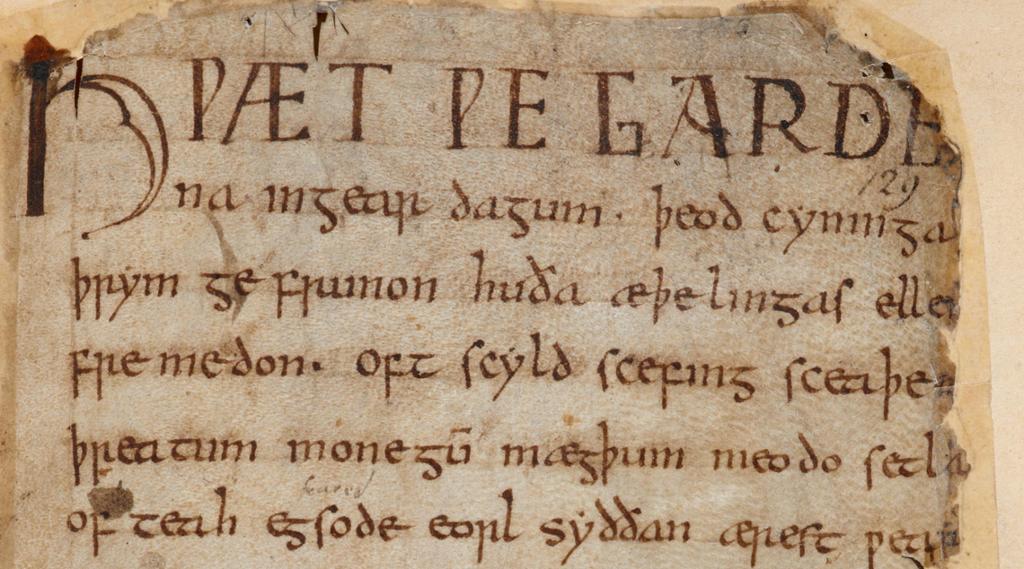From the Old English Period to the Romantic Period

The works in this period were written in Old English. The period is sometimes called the Anglo-Saxon Period. The most famous work from the period is Beowulf which is an epic poem that tells the story of Vikings who are attacked by monsters. Around 400 works have survived from this time. The Old English used in this period is very different from modern-day English.
The Normans, who came from France, conquered England in 1066. Consequently, French became the language of the ruling classes in England for about 300 years. The English language developed from Late Old English to Middle English during this period, and it was heavily influenced by French. Geoffrey Chaucer (ca. 1342-1400) is the best-known poet from this period, and his work The Canterbury Tales is still widely read. Middle English is easier for a modern reader to understand than Old English, but spelling and structure had not yet become standardised.
The Renaissance, meaning rebirth, paved the way for a new kind of literature and a revival of the classical values and ideals of ancient Greece and Rome. During the second half of the 16th century, England was ruled by Queen Elizabeth I, so the term the 'Elizabethan period' is widely used about this time. The greatest writer of the Renaissance period was William Shakespeare, but this was a golden age of English literature, and there are many other writers from this period who are remembered. Among them are John Donne, Thomas Wyatt, Christopher Marlowe, and Francis Bacon.
The Enlightenment, or the Age of Reason, turned its back on the ideals of the Renaissance and focused on new developments in philosophy, science, art, and politics. The literature of the Enlightenment was marked by an interest in the new world and attention to scientific progress. Travelling accounts and guides, reports, journals, and factual descriptions dominated.
The two main contributors to the English literature of the Enlightenment were Daniel Defoe and Jonathan Swift. Defoe’s Robinson Crusoe (1719) and Swift’s Gulliver’s Travels (1726) are both prominent examples of how the writers of the era endeavoured to enlighten people. The two books are monumental works in world literature, and they are still, nearly three centuries later, acclaimed by readers and critics.
After the scientific and factual approach that characterised culture during the Enlightenment, the pendulum swung again. The period from the late 18th century until around 1850 has been labelled 'the Romantic Period'. This is somewhat misleading, because what we today associate with the word 'romantic' will be representative for only a small part of the culture of that era. The Romantic period was much more than what we may think of as 'romantic'.
For German and English writers and poets, the agenda was to praise the beauty of nature and to incite love and longing for what was natural. 'Love' is a key-word – love of nature, of one’s country, of the simple life, and of course love between man and woman, often unfulfilled but absorbingly passionate. Suffering was also seen as a romantic ideal. In the United Kingdom, the Industrial Revolution had begun, and it was radically re-shaping society. The new experiences of pollution from factories and urbanisation may be one reason why people idealised nature and a simple life.
Many - in fact most - of the romantic writers expressed themselves through poetry. Since poetry is traditionally seen as an adequate way to express feelings, it became the genuine voice of romanticism. John Keats, Samuel Taylor Coleridge, William Wordsworth, Percy B. Shelley, and Lord Byron are all prominent English poets of this period. The poetry could express love and praise of nature, or it could be an inflammatory political appeal; many of the romantic poets were political activists. But it was not only poetry – drama and prose were also ways of expressing romantic ideals. Sir Walter Scott’s and Jane Austen’s novels are good examples of Romantic prose. The Gothic genre also emerged during this period, with tales that had ingredients like monsters, occult forces, and magic. Edgar Allen Poe and Mary Shelley (Frankenstein) represent this trend.